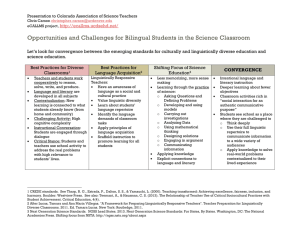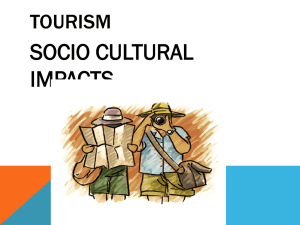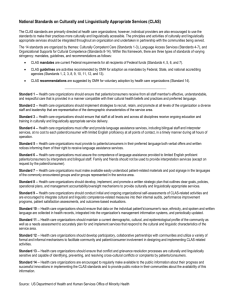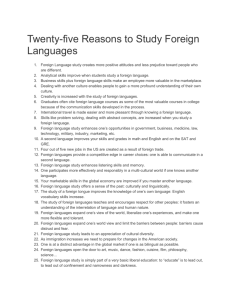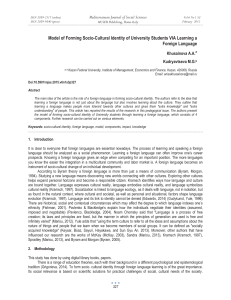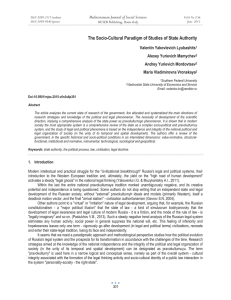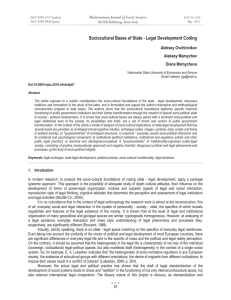Abstract (shorter version)
advertisement
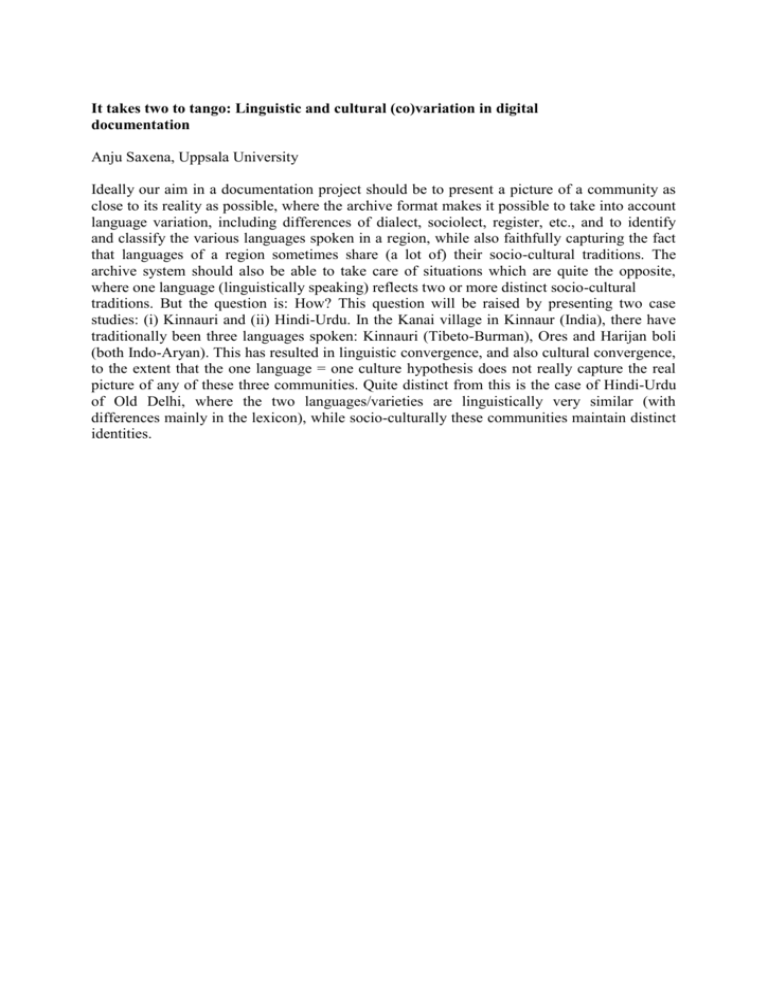
It takes two to tango: Linguistic and cultural (co)variation in digital documentation Anju Saxena, Uppsala University Ideally our aim in a documentation project should be to present a picture of a community as close to its reality as possible, where the archive format makes it possible to take into account language variation, including differences of dialect, sociolect, register, etc., and to identify and classify the various languages spoken in a region, while also faithfully capturing the fact that languages of a region sometimes share (a lot of) their socio-cultural traditions. The archive system should also be able to take care of situations which are quite the opposite, where one language (linguistically speaking) reflects two or more distinct socio-cultural traditions. But the question is: How? This question will be raised by presenting two case studies: (i) Kinnauri and (ii) Hindi-Urdu. In the Kanai village in Kinnaur (India), there have traditionally been three languages spoken: Kinnauri (Tibeto-Burman), Ores and Harijan boli (both Indo-Aryan). This has resulted in linguistic convergence, and also cultural convergence, to the extent that the one language = one culture hypothesis does not really capture the real picture of any of these three communities. Quite distinct from this is the case of Hindi-Urdu of Old Delhi, where the two languages/varieties are linguistically very similar (with differences mainly in the lexicon), while socio-culturally these communities maintain distinct identities.


